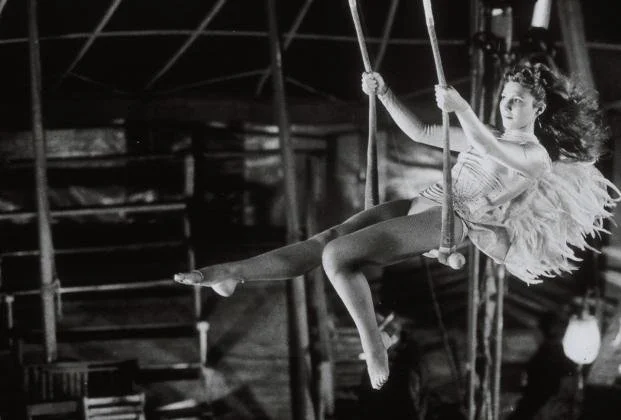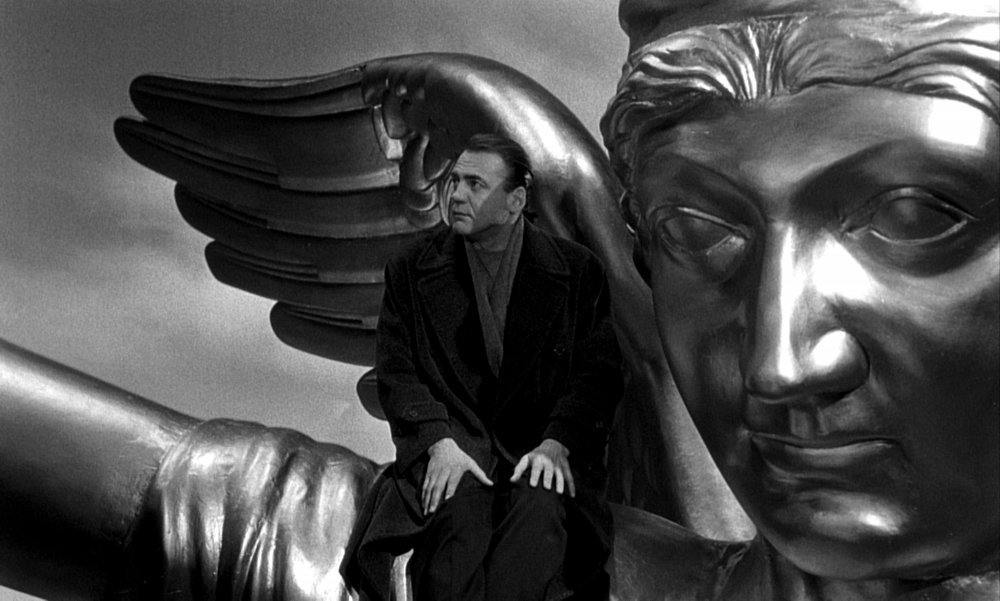Re-Discovering Wim Wenders' Wings of Desire by Craig Hammill
This week, we screened Wim Wenders’ Wings of Desire (1988, West Germany) as part of our final month of 2021 programming.
Watching the movie, prepping for it, sitting in the seat, transported me back to when I was a teenager discovering world cinema for the first time.
It’s a very specific feeling those first raft of movies you watch when you realize cinema is going to be your life.
I ping ponged from Chaplin to Fellini to Bergman to John Ford to pre-code Howard Hawks to indie discoveries like Hal Hartley to Bunuel’s Viridiana to Frederick Wiseman documentaries to art house all-timers like Wings of Desire to wonderful gems like the Hungarian My Twentieth Century or Jane Campion’s An Angel At My Table. Often, I drafted my poor grandmother, my Bubbie, into recording these movies on VHS tapes off her TV because she had cable and she was willing to do it.
Each week, she’d press into my hand a cassette where the movies were recorded on long-play so I could get 8 hours (and maybe 3-4 features!) of new features. The quality was awful (as you can imagine) compared to today’s 4K re-release restorations. But I didn’t really notice. It was good enough for me to fall under cinema’s spell.
This week, I watched Bruno Ganz as Damien the angel, hovering, moving through a still divided Berlin in the mid-1980’s. I watched Wim Wenders and his incredible cinematographer Henri Alekan (the DP for Jean Cocteau’s 1940’s classics who had been coaxed out of retirement to give this movie its indelible black and white and color look) experiment like crazy with a fluid moving camera, intricate choreography, alive coruscating moving light. I watched Peter Falk show up as Peter Falk (it’s amazing how well that works). I watched Nick Cave and the Bad Seeds. I watched Solveig Dommartin as the free spirit yet focused trapeze artist with whom Bruno Ganz will fall in love.
It’s a joyous movie in the end, very much in the tradition of Capra’s It’s A Wonderful LIfe in its own way. And though it definitely explores and delves into the horrors of war, death, suicide, depression, disillusionment, it ultimately is an unbridled exuberant celebration of just how great it is to be alive.
I laughed out loud at a moment I’d forgotten where Peter Falk gives Bruno Ganz a cigarette so he can try it out and Bruno Ganz gets a big smile. It plays differently now because we all know all too well the devious poison that are cigarettes. And yet if, as I have to admit I have, you’ve ever smoked a cigarette with a friend on a cold day and had a conversation, you know that very specific joy as well.
What Wings of Desire reminded me, what it kindled again to a stronger full flame in me, was the importance of returning to works that deeply impressed you when you were first discovering what you love and seeing and experiencing them as you did.
I felt my own heart and creative spirit tumble and do flips and cartwheels again at the potentiality of it all.
I’m not sure exactly how one can explain to one’s younger or one’s older self the strange mysterious progress and bargain one makes if one’s allowed to age and grow older. You gain a hell of a lot in experience. But you also run the high risk of growing numb, ignorant, oblivious to the incredible fire that burned in you as a younger person.
Somehow, at least for me, the journey seems to be about learning, adapting, and changing based on failure, experience, age while constantly staying in contact with intense exuberance and excitement about the medium.
Re-watching Wings of Desire was a rush of excitement and warmth and memory and inspiration and double dares to make and remember and stick with and push and try and commit and struggle and dig deep and explore and experiment and determine to be truly great in the medium I’ve loved and been in love with and been carried by since my childhood.
Whatever your movie might be, re-discover it, re-watch it. Then do something about it.
Craig Hammill is the founder.programmer of Secret Movie Club.



